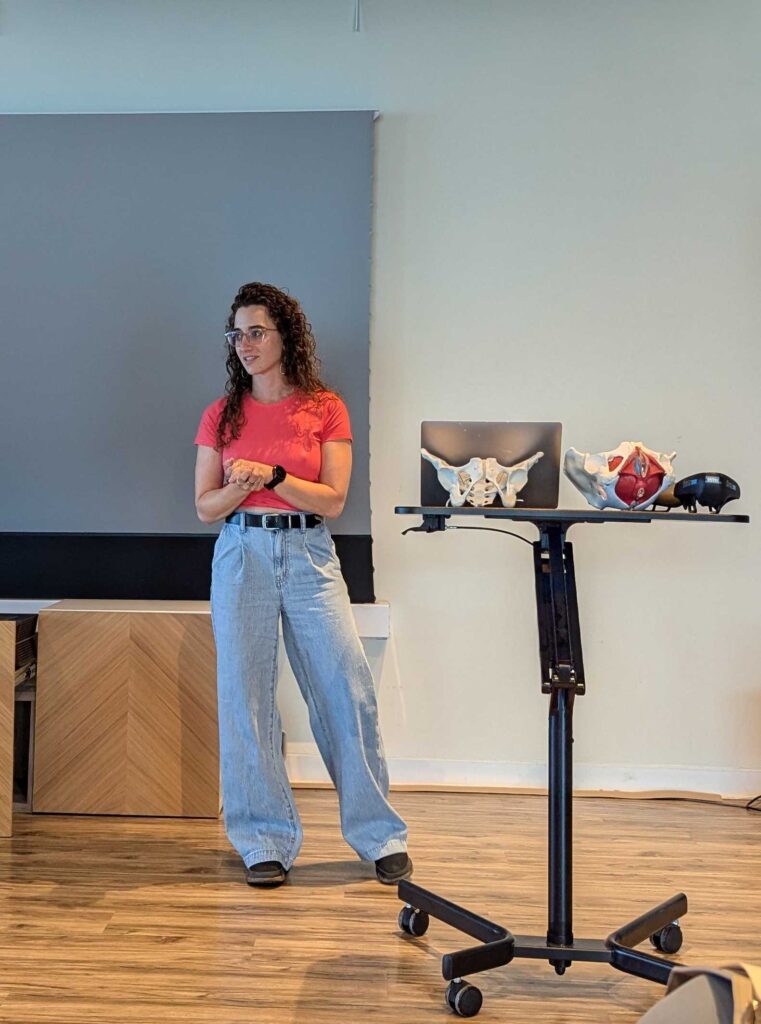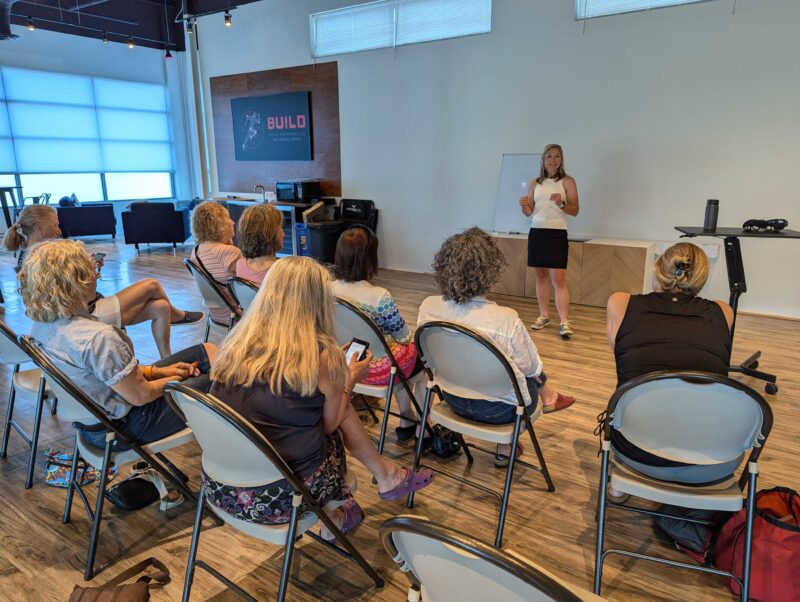We had a great two-fer clinic at BUILD PT on July 11, 2024. Two presenters delved into two important-to-us-as-female-cyclists topics.

PELVIC FLOOR HEALTH
What is the pelvic floor? It’s the muscles, tendons, and cartilage that provide the support within our pelvic girdle (the bony framework of the pelvis). It holds our organs in our bodies, fighting gravity. It also houses all the nerves associated with this area, which includes our lady bits. So why is it so important for female cyclists?
The biggest message we received is that if your hoo-hah is hurting — muscles, nerves, and labia — they are likely being compressed. And compression for soft tissue is never good. The culprit is likely your bike fit, with a big side-eye to the saddle. If you have questions about your seat or bike fit, Jordan Lenkin, PT, DPT, would love to help you ride more comfortably. You can reach her at Build Sports Performance Lab and Physical Therapy.

NUTRITION BASICS
On the nutrition front, we’re all different, with different needs at different times in our lives, but Dietician Laura Anderson provided some guidelines that all of us can apply:
- PROTEIN: Protein is very satiating, with a high thermic effect — of all the macronutrients, it takes the highest amount of energy to digest and process the food you eat. It also builds muscle and repairs damage. But of importance to us as older female cyclists, a high protein diet can prevent osteoporosis and allow us to be functional and mobile as we age. The tragedy is that most of us are not getting the amount of protein daily that grants us these benefits. Laura stressed that women should be consuming approximately one gram of protein per pound of ideal body weight. For most women, that equates to between 115 and 140 grams of protein per day. How do we do that? Start the day with 20-30 grams, have at least that amount for each meal, and add protein to your snacks during the day.
- HEALTHY FATS: These are good for heart health and to decrease inflammation
- CARBOHYDRATES: Carbs break down into glucose, which is what our body uses for fast energy. There are low-energy carbohydrates (fibrous veggies, for instance), and high-energy carbohydrates (such as sweet potatoes, peas, and pasta). A balanced meal includes both of these.
So, what is happening to your body when you BONK? You’ve used up all your glycogen (which is carbohydrate in its storage form) and now your body is forced to switch to using fat as its primary energy source. That shift can result in a sudden energy deficit, which results in a bonk. Not only are they no fun, but bonks can predispose you to injury and damage your immune system.
Some of the most fascinating information we received concerned sports and recovery nutrition. Laura discussed when to take whey protein isolate and when to use plant-based protein. And she also highly recommended a supplement most of us hadn’t heard about: CREATINE! Creatine monohydrate can help us maintain lean mass, brain health, and bone health. Laura suggests five grams per day, every day.
Lastly, do you sweat? (Uh, yeah!) But do you know if your sweat is salty? Not at all? Somewhere in between? Laura has a test she can give you to find out; once you know, you can more accurately replace those lost minerals when cycling, especially on a hot day. She gave us recommendations for “salty sweaters” and recommended that all of us separate our nutrition from our hydration when we ride.
It was an awesome clinic, and we so appreciate the information these professionals provided us.
Laura can be reached at https://www.faynutrition.com/, text her at 970-214-8905, or email her at Laura.optimizenutrition@outlook.com.
Comments are closed.